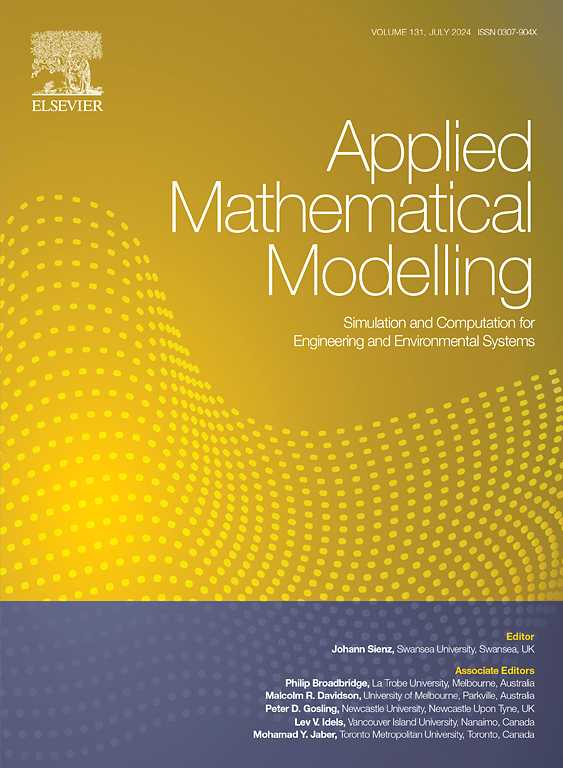A novel approach for modelling stress fields induced by shallow water flows on movable beds
IF 4.4
2区 工程技术
Q1 ENGINEERING, MULTIDISCIPLINARY
引用次数: 0
Abstract
Sediment transport in shallow waters occurs when the water flows over the bed for which the amount of generated sediments can be determined from the transport mechanism caused by the consequent flow. Recently, investigating the bedload and sediment transport using numerical models has been rapidly increased and various techniques have been developed to quantify both the hydrodynamics and morphodynamics in these systems but not the stress distributions in the deformed beds. In the present study, we propose a novel class of coupled finite element/finite volume methods to resolve the effect of sedimentary shallow water flows on the internal stresses in bed topographies. The coupled model employs the linear elasticity for the bed and the nonlinear shallow water equations for the water flow. Suspended sediments are also taken into consideration in this study, and impacts of the erosion and deposition are modelled using well-established empirical equations. The linear equations of elasticity are solved numerically using a finite element approach on unstructured meshes, while the nonlinear shallow water equations are numerically solved using a well-balanced finite volume method. We also introduce an accurate algorithm to sample forces on the interface between the water flow and bed topography to be implemented as coupling conditions between finite volume cells and finite element nodes. Distributions of stress fields in the bed topography due to erosion and sediment transport by shallow water flows are presented for several test examples. The novel coupled model is stable, efficient, accurate, well-balanced and it can be used for solving complex geometries. In addition, the proposed approach offers significant advancements in understanding sedimentary processes in shallow water environments and the induced underground stresses as a result of these processes.
求助全文
约1分钟内获得全文
求助全文
来源期刊

Applied Mathematical Modelling
数学-工程:综合
CiteScore
9.80
自引率
8.00%
发文量
508
审稿时长
43 days
期刊介绍:
Applied Mathematical Modelling focuses on research related to the mathematical modelling of engineering and environmental processes, manufacturing, and industrial systems. A significant emerging area of research activity involves multiphysics processes, and contributions in this area are particularly encouraged.
This influential publication covers a wide spectrum of subjects including heat transfer, fluid mechanics, CFD, and transport phenomena; solid mechanics and mechanics of metals; electromagnets and MHD; reliability modelling and system optimization; finite volume, finite element, and boundary element procedures; modelling of inventory, industrial, manufacturing and logistics systems for viable decision making; civil engineering systems and structures; mineral and energy resources; relevant software engineering issues associated with CAD and CAE; and materials and metallurgical engineering.
Applied Mathematical Modelling is primarily interested in papers developing increased insights into real-world problems through novel mathematical modelling, novel applications or a combination of these. Papers employing existing numerical techniques must demonstrate sufficient novelty in the solution of practical problems. Papers on fuzzy logic in decision-making or purely financial mathematics are normally not considered. Research on fractional differential equations, bifurcation, and numerical methods needs to include practical examples. Population dynamics must solve realistic scenarios. Papers in the area of logistics and business modelling should demonstrate meaningful managerial insight. Submissions with no real-world application will not be considered.
 求助内容:
求助内容: 应助结果提醒方式:
应助结果提醒方式:


